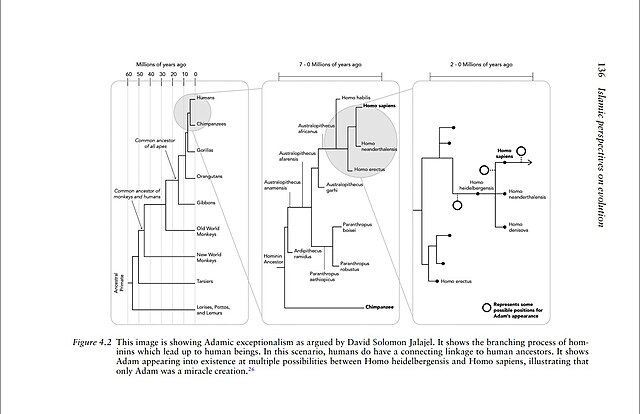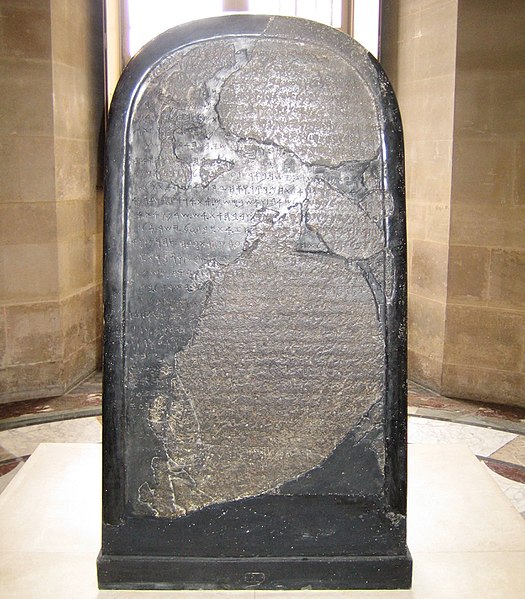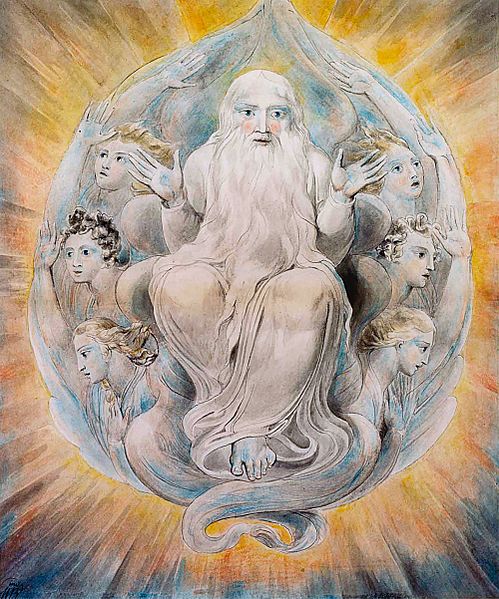Theistic evolution, alternatively called evolutionary creationism, is a view that God acts and creates through laws of nature. Here, God is taken as the primary cause while natural causes are secondary, positing that the concept of God and religious beliefs are compatible with the findings of modern science, including evolution. Theistic evolution is not in itself a scientific theory, but includes a range of views about how science relates to religious beliefs and the extent to which God intervenes. It rejects the strict creationist doctrines of special creation, but can include beliefs such as creation of the human soul. Modern theistic evolution accepts the general scientific consensus on the age of the Earth, the age of the universe, the Big Bang, the origin of the Solar System, the origin of life, and evolution.

In the 19th century, geology and paleontology were still connected to Old Earth creationism. The above depicts a brutal world of deep time, existing before Adam and Eve, from Thomas Hawkins' book on plesiosaurs. Artist: John Martin, 1840
Diagram of Adamic exceptionalism.
In monotheistic belief systems, God is usually viewed as the supreme being, creator, and principal object of faith. In polytheistic belief systems, a god is "a spirit or being believed to have created, or for controlling some part of the universe or life, for which such a deity is often worshipped". Belief in the existence of at least one god is called theism.
The Mesha Stele bears the earliest known reference (840 BCE) to the Israelite God Yahweh.
Thomas Aquinas summed up five main arguments as proofs for God's existence (painting by Carlo Crivelli, 1476).
Isaac Newton saw the existence of a Creator necessary in the movement of astronomical objects (painting by Godfrey Kneller, 1689).
God Blessing the Seventh Day, 1805 watercolor painting by William Blake






